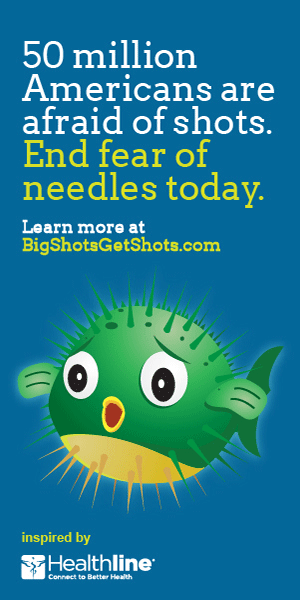
Injury Prevention and Recovery Tips for Athletes and Fitness Enthusiasts
Welcome to the world of fitness and sports, where enthusiasm meets endurance, and staying injury-free is the ultimate goal. Whether you’re training for a marathon or just love hitting the gym, taking steps to prevent injuries is essential. Let’s look into some practical tips that can help you maintain optimal performance while minimizing the risk of injuries.
1. Understanding Your Body’s Signals
Before lacing up your sneakers, it’s crucial to listen to your body. It often provides subtle hints when something isn’t quite right. Feeling fatigued or experiencing unusual pain? It’s okay to take a rest day or adjust your routine. Recognizing these signals early can drastically reduce the risk of more severe injuries.
2. The Importance of Warm-ups
Starting your workout without a proper warm-up is like driving a car without an engine check. Dynamic stretches and light cardio exercises prepare your muscles for the strenuous activity ahead. Spend at least 10-15 minutes on warm-ups to elevate your heart rate and increase blood flow to your muscles. This simple step can prevent muscle tears or strains.
Effective Warm-up Exercises
-
Arm Circles
-
Leg Swings
-
Jumping Jacks
-
Knee Raises
3. Adopt a Strength Training Routine
Building strength isn’t just for lifting heavier weights; it’s a protective measure against injuries. By strengthening your muscles, tendons, and ligaments, you create a stable framework that supports dynamic movements. Incorporate exercises that target your core, as this area stabilizes the entire body, reducing stress on your limbs.
Core Strengthening Suggestions
-
Planks
-
Squats
-
Lunges
-
Bridges
4. Stretching Isn’t Optional
The conversation about flexibility is incomplete without mentioning stretching. Improving your flexibility can enhance your performance, reduce joint pain, and prevent muscle-related injuries. It’s beneficial to include Orlando flexibility training in your program, particularly if you’re engaging in high-impact sports. Stretching should be a non-negotiable part of your fitness regime.
5. The Role of Nutrition and Hydration
Your diet is as crucial to injury prevention as any exercise routine. Fueling your body with the right nutrients ensures that muscles recover and function efficiently. Hydration is equally important, as it aids in maintaining muscle elasticity and prevents cramps. Aim for a balanced diet rich in proteins, carbohydrates, fats, vitamins, and minerals.
Essential Nutrients
-
Proteins: Repair and build muscles
-
Carbohydrates: Provide energy
-
Fats: Support long-term energy storage
-
Vitamins and Minerals: Support overall health
6. Rest and Sleep
It might sound counterintuitive, but rest is a vital part of training. Overworking your body without enough downtime increases the likelihood of injuries. Quality sleep improves muscle recovery, cognitive function, and mental well-being. Ensure you’re getting 7-9 hours of restful sleep each night to support your fitness goals.
Recovery: Getting Back on Track
7. Healing Through Active Recovery
If you do face an injury, active recovery can be your best friend. This involves low-impact exercises such as walking, swimming, or cycling to keep your body moving without overexertion. These activities help maintain your fitness level while promoting faster healing.
8. Benefiting from Professional Guidance
Consulting with a personal trainer specializing in osteoporosis or any other condition can offer invaluable insights. A professional can guide you through customized exercises that align with your specific needs, ensuring a safe and effective recovery. Their expertise helps in modifying exercises to prevent re-injury.
9. The Option of Therapeutic Interventions
Sometimes, traditional methods aren’t enough, and that’s where therapeutic interventions come into play. Options such as therapy massages, acupuncture, or physical therapy can provide targeted relief and promote healing. These interventions should be tailored to your individual requirements for the best outcomes.
10. Listen to Expert Recommendations
Experts often recommend seeking additional support from a medical spa in Orlando to complement your recovery process. Services like hydrotherapy or specialized massages can enhance muscle relaxation and accelerate healing. Always be sure to discuss these options with a healthcare professional to ensure they’re suitable for your condition.
11. Stay Mentally Strong
Injuries can affect one’s mental and physical well-being. To cultivate resilience, focus on mental health practices. Consider mindfulness exercises or meditation as part of your daily routine to maintain a positive outlook. Staying mentally strong can significantly impact one’s physical recovery.
Back to the Grind with Caution
12. Gradual Return to Activity
Once you’re on the mend, it’s tempting to jump right back in at full throttle. But patience is your ally. Gradually reintroduce physical activities, closely monitoring your body’s response. Slowly ramping up intensity minimizes the chance of re-injury, ensuring long-term success.
13. Tracking Progress and Setting Realistic Goals
Keeping track of your recovery progress through tools like fitness apps or journals can be motivating and insightful. Set achievable milestones that reflect your current capabilities. Celebrate small victories and be patient with setbacks—they’re a natural part of recovery.
14. Community and Support Systems
Connecting with a community of like-minded individuals can offer support and accountability. Whether it’s a local gym group or an online forum, sharing experiences can provide encouragement and new perspectives. You’re not alone in your journey, and others can offer useful advice and empathy.
Final Thoughts
Injury prevention and recovery require more than just motivation—they demand comprehensive care and attention to your body’s needs. Implementing structured routines in your fitness regimen can pave the way for a healthier, injury-free lifestyle. Stay attuned to your body, leverage community support, and cherish every step towards recovery. Remember, the journey to fitness should be joyous and fulfilling, free from the fear of setbacks.
